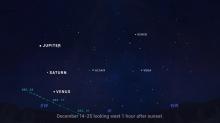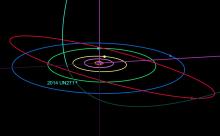Listen to today's episode of StarDate on the web the same day it airs in high-quality streaming audio without any extra ads or announcements. Choose a $8 one-month pass, or listen every day for a year for just $30.
You are here
Tau Herculid Meteors
A comet that fell apart almost three decades ago could put on a good show tonight: a meteor shower.
The comet has a mouthful of a name: 73/P Schwassman-Wachmann 3. It was discovered in 1930. Astronomers quickly looked for a meteor shower produced by the comet. And they found it. It was called the Tau Herculid shower because its meteors appeared to “rain” into the sky from near a star in Hercules.
In the decades since, little has been heard of the shower. But in 1995, the comet disintegrated, spewing out huge amounts of dust.
Some models say that could have squirted enough material toward Earth’s orbit to trigger a meteor shower tonight, as the grains of dust ram into the atmosphere. In addition, we may pass through a couple of clumps of dust released in the 1890s.
Astronomers can’t say for sure that we’ll see anything. But if we do, the peak should come around midnight — a little later in the east, a little earlier in the west. Estimates of the number of meteors range from a few to a few thousand.
The central point of the shower has drifted toward the bright star Arcturus, which will be high in the southwest. But the meteors can blaze across any part of the sky, so you don’t have to look toward Arcturus to see them.
The shower will be better from the southern U.S. because twilight will end earlier than in the northern states. But there’s no moonlight to interfere with the show — sparks from a dead comet.
Script by Damond Benningfield





